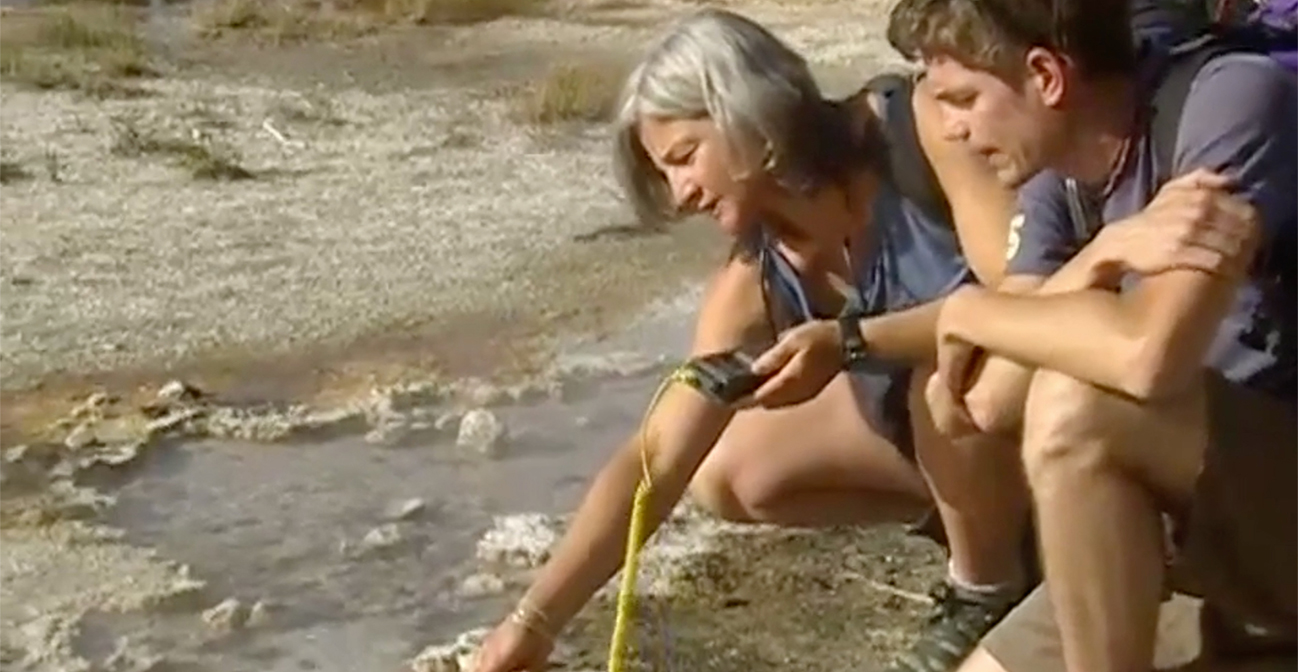Join us for conversations that inspire, recognize, and encourage innovation and best practices in the education profession.
Available on Apple Podcasts, Spotify, Google Podcasts, and more.

Microbial diversity far surpasses that of other organisms on Earthmovers. This unit examines recent studies of microbes including extremophiles, the comparisons of Bacteria and Archaea, the formation and life cycle of biofilms, and the myriad ways that microbes impact our lives and our planet.
ONLINE TEXTBOOK
The online textbook chapters support and extend the content of each video. The Web version can be viewed as a full chapter or as individual sub-sections, and includes links to glossary terms and other related material.
ANIMATIONS & IMAGES
Explore the archive of animations, images and figures from the videos and online textbook. All of the images can be viewed online or downloaded as jpg files.
EXPERT INTERVIEW TRANSCRIPTS
Read profiles of the expert scientists featured in the video and find the complete transcripts of the interviews conducted for this unit.
Anne Camper, Ph.D.
Bill Costerton, Ph.D.
Dan Kotansky, Hydrologist
Anna-Louise Reysenbach, Ph.D.
Phil Stewart, Ph.D.
Introduction
Microbes as the First Organisms
The Diversity of Microbial Metabolism
Archaea and Bacteria
The Universal Tree of Life
Studying Unculturable Microbes with PCR
Microbes and the Carbon Cycle
Microbes and the Cycling of Nitrogen
Biofilms
Biofilms Formation and Bacterial Communication
Impact of Biofilms on Humans
Communication Between Bacteria and Eukaryotes
Microbes in Mines
Microbial Leaching of Ores
Coda
Anaerobic respiration
A pathway of energy metabolism in which an alternate electron acceptor replaces oxygen. Organisms undergoing anaerobic respiration reduce nitrite (NO2-), nitrate (NO3-), or carbon dioxide (CO2) instead of oxygen.
Archaea
A domain of prokaryotic organisms that differ from bacteria. In contrast to bacteria, arachaea lack cell wall peptidoglycan, contain histone-like proteins, and possess chemically distinct cell membrane phospholipids.
Autoinducers
Molecules involved in quorum sensing that regulate mRNA production for specific genes in response to population density.
Biofilm
A multilayered bacterial population embedded in a polysaccharide matrix and attached to some surface.
Chemolithoautotroph
An organism that obtains energy from inorganic compounds and carbon from CO2.
Chemoorganotroph
An organism that obtains energy from the oxidation of organic compounds.
dsDNA
Double-stranded DNA. A DNA molecule in which two chains (backbones of alternating sugars and phosphates) are linked together by hydrogen bonding between complementary bases.
Extremophiles
Organisms that thrive in what humans consider extreme conditions – very salty, hot, cold, acidic, or basic conditions – or at high pressure (such as in the depths of the sea).
Methanogenic
Methane producing.
Oligonucleotide (oligo)
A short, single-stranded DNA molecule consisting of a defined sequence of nucleotides. Used to initiate DNA replication in PCR.
Polymerase chain reaction (PCR)
A technique that uses DNA polymerase to amplify the amount of DNA in a sample.
Quorum sensing
A process by which a bacterium detects the density of other bacteria in an area.
Stromatolites
Fossilized microbial mats consisting of layers of filamentous prokaryotes and trapped sediment.
Thermophile
Organisms that grow optimally above 45°C. Hyperthermophiles grow optimally above 80°C.
Thermoprotective proteins
Proteins that help bacteria survive heat. Some thermoprotective proteins help refold partially denatured proteins. Others help stabilize DNA.
Eukarya
The domain of all eukaryotic organisms. Eukaryotes are single or multicellular organisms with cells that have a membrane-enclosed nucleus and usually other organelles.
Lateral gene transfer
Also referred to as horizontal gene transfer. The transmission of genes directly between organisms, particularly bacteria, and not from parent to offspring.
ssDNA
Single-stranded DNA. A DNA molecule consisting of only one chain of alternating sugars (deoxyribose) and phosphates.
Books
Madigan, M. T., J. M. Martinko, and J. Parker. 2000. Brock biology of microorganisms 9th Ed. Upper Saddle River, NJ: Prentice Hall.
![]() A college-level microbiology textbook with extensive information on Archaea and a clear presentation of microbial mining.
A college-level microbiology textbook with extensive information on Archaea and a clear presentation of microbial mining.
Salyers, A. A. and D. D. Whitt. 2001. Microbiology – Diversity, disease and the environment. Bethesda, Maryland: Fitzgerald Science Press.
![]() A college-level microbiology textbook with an ecological emphasis.
A college-level microbiology textbook with an ecological emphasis.
Articles
Bassler, B. L. 2001. Tiny conspiracies. Natural History 110:16-21.
![]() A review of intracellular communication between microbes. Highlights interactions between the fluorescent bacterium Vibrio fischeri and its squid host.
A review of intracellular communication between microbes. Highlights interactions between the fluorescent bacterium Vibrio fischeri and its squid host.
Costerton, J.W., and Philip S. Stewart. 2001. Battling biofilms. Scientific American 285:3-9.
![]() Reviews biofilms. Highlights approaches for inhibiting biofilm formation.
Reviews biofilms. Highlights approaches for inhibiting biofilm formation.
Doolittle, W. F. 2000. Uprooting the tree oflife. Scientific American 282:90-95.
![]() Introduces alternate systems for describing bacterial relatedness.
Introduces alternate systems for describing bacterial relatedness.
Losick, R., and D. Kaiser. 1997. Why and how bacteria communicate. Scientific American 276:68-73.
![]() A clear review of bacterial communication.
A clear review of bacterial communication.
Reysenbach, A.L., and E. Shock. 2002. Merging genomes with geochemistry in hydrothermal ecosystems. Science 296:1077-82.
![]() A review of findings on bacterial populations in hydrothermal vents and volcanic hotsprings.
A review of findings on bacterial populations in hydrothermal vents and volcanic hotsprings.